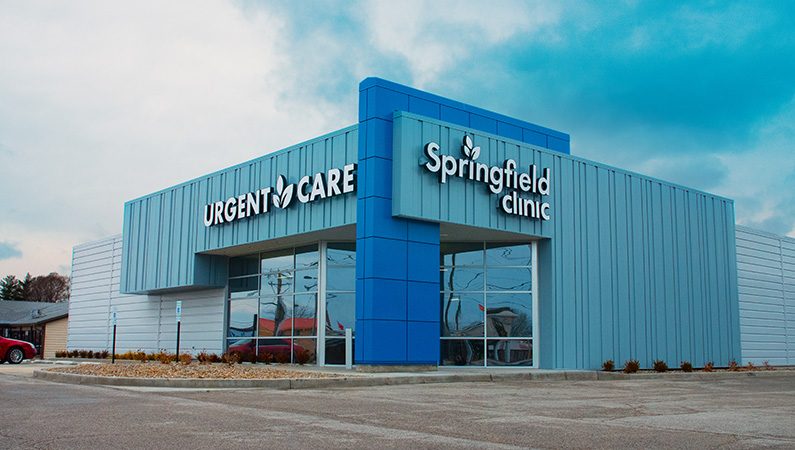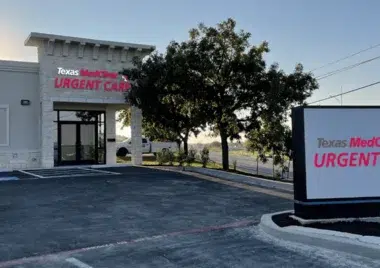The Value of Urgent Treatment Centers in Bridging the Void In Between Medical Care and Emergency Services
Urgent care facilities have actually arised as an important component of the health care landscape, efficiently addressing the vital requirement for prompt clinical interest without resorting to emergency situation solutions. By giving look after non-life-threatening conditions, these centers assist to alleviate the burden on emergency spaces and improve individual access to prompt treatment. Their extended hours and varied solutions satisfy a growing population looking for choices to traditional key treatment. The evolving duty of urgent treatment facilities increases important concerns about their assimilation within the more comprehensive health care system and the ramifications for person outcomes and resource allocation.
Introduction of Urgent Care Centers
Urgent care facilities have actually come to be a necessary component of the healthcare delivery system, providing obtainable medical solutions for non-life-threatening problems. These centers commonly operate outdoors conventional office hours, offering patients an option to emergency clinic and key care settings. Patients seeking urgent treatment frequently present with problems such as minor injuries, infections, or ailments that require prompt focus however do not position an immediate risk to life or arm or leg.
Urgent treatment centers are staffed by a variety of healthcare experts, consisting of medical professionals, registered nurse practitioners, and medical professional aides, that are outfitted to diagnose and treat numerous clinical problems. They typically include diagnostic tools such as X-ray equipments and research laboratory services, allowing them to offer thorough care on-site.
The establishment of urgent care facilities has been influenced by the enhancing demand for timely medical services in a hectic culture, where individuals might struggle to protect appointments with primary treatment carriers. As a result, these facilities intend to reduce blockage in emergency situation divisions, boosting overall healthcare effectiveness. Additionally, urgent care centers often offer as a bridge in between medical care and emergency services, making sure that people get ideal care tailored to their specific clinical demands.

Advantages of Urgent Care Services
Accessing prompt treatment is a considerable advantage of immediate treatment services. These centers give immediate interest for non-life-threatening problems, effectively reducing wait times contrasted to traditional emergency departments. Clients looking for take care of minor injuries, illnesses, or urgent wellness problems can get treatment without the long hold-ups commonly connected with healthcare facility sees.
Another trick benefit is the extensive hours of procedure. Several immediate treatment centers are open nights and weekend breaks, suiting people who might not be able to see their health care supplier during standard office hours. This flexibility makes immediate treatment an obtainable choice for those with active timetables or sudden health and wellness concerns.
Additionally, immediate care centers often use a wide variety of services, including analysis testing, X-rays, and basic research laboratory solutions. This comprehensive strategy permits fast diagnosis and treatment, boosting client satisfaction.
Additionally, immediate treatment facilities are generally a lot more cost-efficient than emergency clinic, making them an appealing alternative for people without insurance policy or those with high-deductible plans. Overall, immediate care solutions play an essential duty in offering obtainable, timely, and economical treatment.
Contrast With Health Care
Commonly, people commonly consider their options between immediate care centers and health care service providers when seeking medical focus. Both offer necessary functions in the medical care system, yet they differ substantially in range, expense, and ease of access.
Key treatment providers are normally the first point of contact for people, concentrating on lasting health management, preventive care, and persistent condition monitoring. They offer connection of care, cultivating a patient-provider connection that enables thorough health and wellness analyses and customized treatment plans. Nonetheless, scheduling an appointment can be lengthy, typically calling for days or weeks in advancement.
On the other hand, immediate care facilities offer prompt look after non-life-threatening conditions that call for prompt focus, such as small injuries or infections. These centers typically operate outside of standard workplace hours, fitting patients who may not be able to visit their main care copyright throughout regular service times. Additionally, immediate treatment is normally a lot more cost-efficient than emergency clinic sees, making it an enticing choice for those with restricted medical care gain access to.
Inevitably, while immediate care centers and main treatment carriers both contribute to patient wellness, they satisfy distinct requirements, making it important for individuals to determine which option finest lines up with their scenarios.
Emergency Services Communication
The communication between urgent care facilities and emergency situation services is an important facet of the medical care landscape, especially when patients encounter situations that may rise in extent. Immediate treatment facilities work as a bridge between main care and emergency divisions, resolving non-life-threatening problems that require prompt focus. This collaboration enhances client outcomes and enhances resource allotment within the medical care system.
When people present with not serious yet immediate concerns, urgent care centers can effectively handle their requirements, alleviating congestion in emergency rooms. Facilities geared up with diagnostic capabilities can assist in prompt references to emergency services when a patient's look at here condition surpasses the extent of immediate care therapy. This smooth interaction assists ensure that clients get the suitable degree of treatment without unneeded hold-ups.
Furthermore, efficient communication in between urgent treatment carriers and emergency situation services is essential. Sharing individual information and treatment backgrounds fosters collaborated care, minimizing the danger of repetitive tests and procedures. As healthcare remains to progress, the dynamic connection in between immediate treatment centers and emergency solutions will play a critical duty in improving client care performance, complete satisfaction, and total wellness outcomes within the neighborhood.
Future of Urgent Treatment Facilities
As health care demands advance, the future of immediate treatment centers is poised to end up being significantly indispensable to the general clinical ecological community her response (Urgent Care). These centers are most likely to broaden their roles by integrating innovative technologies, such as telemedicine, synthetic intelligence, and electronic health and wellness document integration. This will improve client gain access to and streamline treatment sychronisation in between immediate treatment, health care, and emergency situation solutions
Additionally, immediate treatment facilities are anticipated to diversify their service offerings to consist of preventive care and chronic disease management. This shift will certainly place them as essential elements in managing populace health and wellness, reducing the concern on emergency situation departments, and resolving spaces in medical care schedule.
The expanding fad of value-based care will further increase the improvement of urgent care facilities, motivating them to concentrate on client outcomes and satisfaction. Facilities might additionally adopt joint method models, working closely with experts and health care carriers to guarantee extensive client management.
Final Thought
In conclusion, immediate treatment centers serve an important function in the health care system by supplying immediate accessibility to treatment for non-life-threatening problems, successfully minimizing stress on emergency situation solutions. Their expanded hours and diverse variety of solutions boost client benefit and complete satisfaction, while also ensuring ideal care delivery. As health care requires proceed my company to evolve, the duty of immediate care centers will likely come to be significantly significant, more linking the void between health care and emergency services.
The facility of immediate care facilities has been affected by the increasing demand for timely medical services in a hectic society, where patients might battle to protect appointments with key treatment suppliers. Additionally, urgent treatment centers commonly serve as a bridge in between key treatment and emergency services, making certain that patients obtain appropriate care tailored to their certain medical requirements.
Lots of immediate treatment centers are open nights and weekend breaks, accommodating patients that may not be able to see their primary treatment supplier during conventional office hours (Urgent Care). As health care continues to advance, the dynamic relationship between immediate care facilities and emergency services will play a pivotal function in enhancing patient care performance, fulfillment, and total health results within the area
